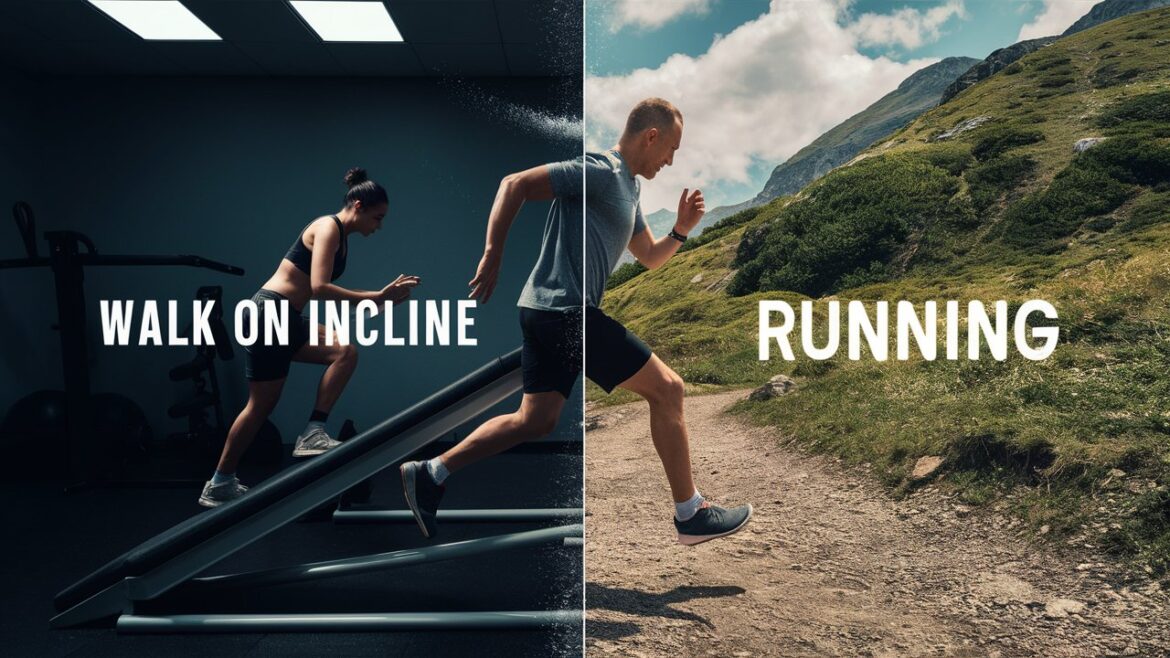Introduction
Learn all about the benefits of walking on an incline vs. running. Understand which is best to promote cardiovascular health, calorie burning, and turn on your muscles in this in-depth review.
Understand the Basics
What is Incline Walking?
Incline walking simply means walking on a slant treadmill. This easy ramping up from a flat treadmill increases the activity done by more muscles and revs up the calories burned.
What is Running?
Running is another high-impact exercise and very famous cardiovascular activity. This physical activity involves a more extreme range of motion movement pattern that elevates heartbeat rate to achieve total fitness and endurance.
Comparative Analysis of Incline Walking and Running
Cardiovascular Health
Both walking and running on an inclined plane work well for a good cardio workout. Walking would make the heart of a person beat at a low and lovely pace and is hence very ideal for most people who are just starting out.
Running, however, presents a more vigorous cardiovascular workout that allows quick building up of endurance by the individual.
Calorie Burn and Weight Loss
In all likelihood running will be considerably higher intensity per minute than any form of walking. However, walking uphill enormously multiplies the caloric expenditures from walking on the level; thus it represents an outstanding activity with regard to being low-impact relative to weight loss.
Muscle Activation and Strength
The muscle groups used in incline walking are quite different than in normal walking or running on a flat surface, giving the glutes, hamstrings, and calves more emphasis.
Running adds some extra benefit to those muscles, but it is much more stressful to the entire lower body in general, specifically the quadriceps.
It is of low impact, hence suitable for people suffering from joint problems and those recovering from injuries. Running, on the other hand, although rewarding, is abusive to joints, especially the knees and the ankles. If not run properly and in proper form, one risks injury.
Circumstantial Benefits Dependence
Incline Walking for Beginners
Incline walking is very excellent and recommended for all beginners. It offers a far more dynamic workout without the hard impacts due to running. You could always walk at a low gradient initially and increase with the improvement in your strength and endurance.
Running for the Advanced Athlete
The already fit find that it is a good way to punish themselves. Running brings improvement in speed, stamina, and general cardio, so it is perfect. Only make sure to wear correct shoes in the correct form, lest one wants to be injured.
Practical Tips and Techniques
Strategies for Effective Incline Walking
Treadmill Settings
Start at 5% and move upward from there.
Hasanen and Posture
Should be maintained straight with the back, engaged core, with steady steps
Safety and Efficiency Running Tips
Gears and Shoes
Acquire good running shoes, that would provide comfort to the feet; lessen the impact
Warm-up and Cool-down Routines
Starting with the warm-up should be at least 5 minutes long, and after every training, cool down to help prevent injuries and maintain good performance
Mix Both for Good All-Round Workout
A Hybrid Workout Plan
Both incline walking and running can be mixed easily in a workout plan to maximize its effect. In other words, one may run for 20 minutes, then engage in the 20-minute walk on an incline. In such a way, the mix will bring a change in the workout regime that shall lead to overall fitness.
FAQs
Which will burn more calories: walking on an incline or running?
While it tends to burn more when compared to incline walking, it isn’t such a wide gap to automatically call running the superior choice. More important is the fact that it’s so much more sustainable and easier on joints with incline walking—hence making this an excellent choice for long-term weight loss.
Is Incline Walking Easier on the Joints Than Running?
Yes, it has a lower impact, so it is gentler on the joints and works as a safe bet for those conscious about their joints.
Can Incline Walking Replace Running?
One can get some Cardiovascular benefits from incline walking; however, it does take substantially longer time when pitted against running or a higher-intensity activity.
What is the best setting on a treadmill to do incline walking?
You’ll want to start out at an incline of 5 percent while traveling 3 to 4 miles per hour. Again, you can modify this based on how fit you are and what kind of event you’re training for.
How would someone get started if they just starting to walk or run on an incline?
Easy into it by starting with short sessions, then progress the duration and intensity for the subject. In the event of the incline walk initiation, the gradient should be kept low, and for running initiation, a mix of walking and jogging intervals should be provided.
Conclusion: Choose the Right Workout for Your Fitness Needs. They each have their unique perks and may depend on the fitness level, joint health, or preference of a person. Just find one you like best, and you can do it consistently in the long term.

